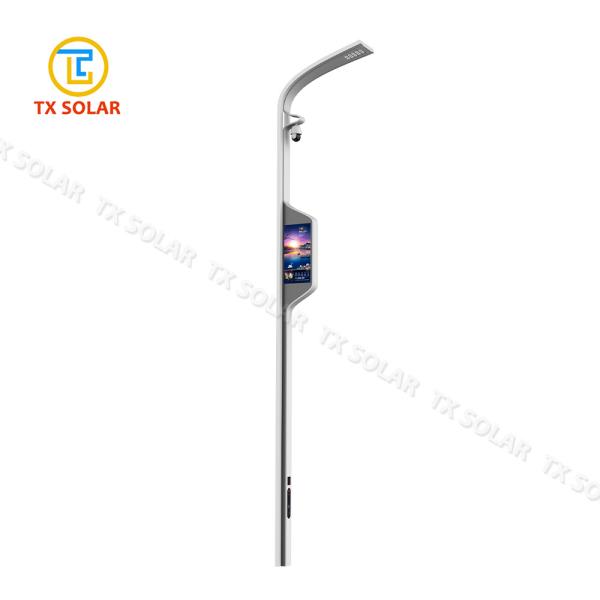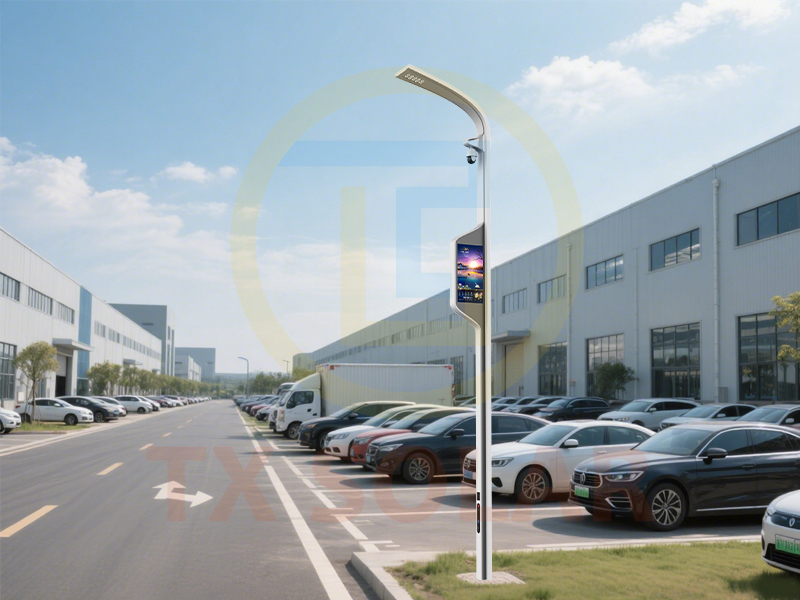From kerosene lamps to LED lamps, and then to smart street lights, the times are evolving, humans are constantly moving forward, and light has always been our unremitting pursuit. Today, street light manufacturer Tianxiang will take you to review the evolution of smart street lights.
 The origin of street lights can be traced back to London in the 15th century. At that time, in order to cope with the darkness of London’s winter nights, London Mayor Henry Barton decisively ordered that lamps be installed outdoors to provide lighting. This move received a positive response from the French and jointly promoted the initial development of street lights.
The origin of street lights can be traced back to London in the 15th century. At that time, in order to cope with the darkness of London’s winter nights, London Mayor Henry Barton decisively ordered that lamps be installed outdoors to provide lighting. This move received a positive response from the French and jointly promoted the initial development of street lights.
In the early 16th century, Paris promulgated a regulation requiring that windows facing the street of residential buildings must be equipped with lighting fixtures. With the rule of Louis XIV, many street lights were lit up on the streets of Paris. In 1667, “Sun King” Louis XIV personally promulgated the Urban Road Lighting Decree, which was hailed by later generations as the “Age of Light” in French history.
From kerosene lamps to LED lamps, street lights have undergone a long evolutionary history. With the development of Internet of Things technology, the upgrade of street lights has also shifted from optimizing the “lighting” effect to “smart” perception and control. Since 2015, American communication giants AT&T and General Electric have jointly installed cameras, microphones and sensors for 3,200 street lights in San Diego, California, with functions such as finding parking spaces and detecting gunshots; Los Angeles has introduced acoustic sensors and environmental noise monitoring sensors for street lights to detect vehicle collisions and directly notify emergency departments; the Copenhagen Municipal Department in Denmark will install 20,000 energy-saving street lights equipped with smart chips on the streets of Copenhagen by the end of 2016…
“Smart” means that street lights can “smartly” complete tasks such as automatic switching, adjusting brightness, and monitoring the environment through their own perception, thereby changing the high-cost, low-flexibility wired manual control. Compared with traditional street lights, smart street light poles can not only illuminate the road for pedestrians and vehicles, but also act as base stations to provide citizens with 5G networks, can serve as the “eyes” of smart security to maintain the safety of the social environment, and can be equipped with LED screens to display weather, road conditions, advertisements and other information to pedestrians. With the rapid development of new generation information technologies such as the Internet of Things, the Internet, and cloud computing, the concept of smart cities has gradually become mainstream, and smart lamp poles are regarded as the core component of future smart cities. These smart street lamps not only have the function of automatically adjusting brightness according to traffic flow, but also integrate a variety of practical functions such as remote lighting control, air quality detection, real-time monitoring, wireless WIFI, car charging piles, and smart broadcasting. Through these advanced technologies, smart lamp poles can effectively save power resources, improve the management level of public lighting, and reduce maintenance costs.
Smart lamp poles are quietly changing our cities. With the continuous innovation of technology, it will unlock more surprise functions in the future, which is worth our wait and see.
From the early traditional lighting solutions to the current 5G IoT smart lamp pole overall solution, as a veteran company that has witnessed the growth of smart street lamps, Tianxiang has always taken “technology empowering urban intelligence” as its mission and focused on the technical innovation and scene landing of the entire industry chain of smart street lamps. Welcome to contact us for more information.
Post time: Jun-25-2025





